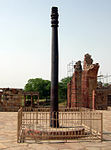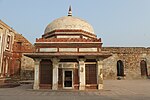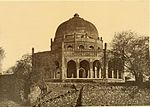Madrasa and tomb of Alauddin Khalji
Alauddin KhaljiArchitecture of the Khalji dynastyBuildings and structures completed in 1315Buildings and structures in DelhiMehrauli ... and 2 more
Tourist attractions in DelhiWorld Heritage Sites in India

Madrasa of Alauddin Khalji is a madrasa (Islamic school) located in the Qutb Minar complex, Mehrauli, Delhi, India. It was built by Alauddin Khalji in 1315, and the tomb attributed to him is located inside the madrasa. This is the first instance of such tomb-madrasa combination in India.
Excerpt from the Wikipedia article Madrasa and tomb of Alauddin Khalji (License: CC BY-SA 3.0, Authors, Images).Madrasa and tomb of Alauddin Khalji
Kalka Das Marg,
Geographical coordinates (GPS) Address Nearby Places Show on map
Geographical coordinates (GPS)
| Latitude | Longitude |
|---|---|
| N 28.523888888889 ° | E 77.184444444444 ° |
Address
Khalji's Tomb and Madrassa
Kalka Das Marg
110030
Delhi, India
Open on Google Maps









